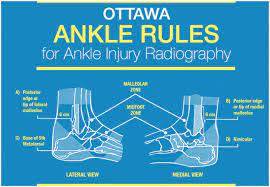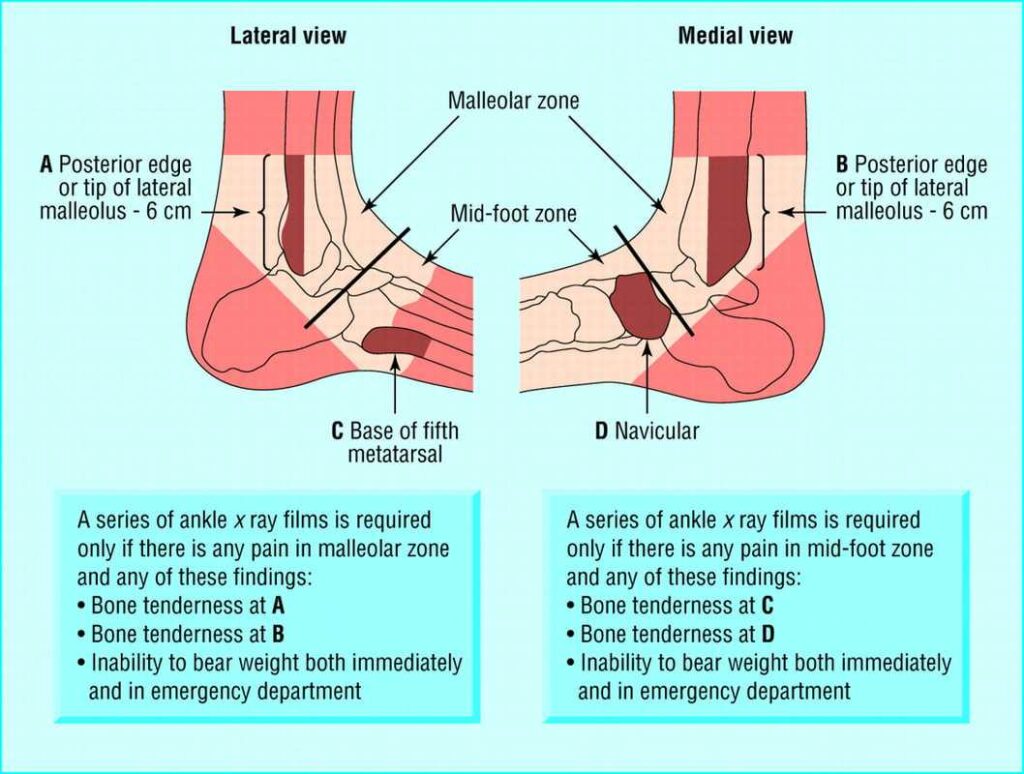If you’ve ever been injured, you know that it can be difficult to determine just how bad the injury is. Many people turn to the Ottawa Ankle Rules to help them assess their injuries. This easy-to-use guide can help you determine whether or not you need medical attention for your ankle injury. In this blog post, we will discuss how to use the Ottawa Ankle Rules and what they mean for your health.
Contents
What Are Ottawa Ankle Rules?

Ottawa Ankle Rules (OAR) is a set of criteria developed in 1992 by Dr. Ian Stiell, an emergency physician at the Ottawa Hospital in Canada. The rules are intended to help medical practitioners decide whether or not an x-ray needs to be taken to diagnose an ankle injury.
What Are The 5 Ottawa Rules For An Ankle Fracture?

The 5 Ottawa ankle rules are as follows:
Reliability
The Ottawa ankle rules are considered to be very reliable and have a sensitivity of 97% (meaning that 97% of the time they correctly identify fractures).
If there is bone tenderness at the tip of the medial malleolus, lateral malleolus, or posterior aspect of the distal 6 cm fibula then there is a fracture and the patient needs an x-ray.
Accuracy
They also have a high level of accuracy (95.3%), meaning that they are reliable and accurate in determining whether or not an ankle fracture is present.
If there is tenderness along the posterior edge of the tibia, tenderness at the base of the 5th metatarsal bone, or pain in the mid-foot region when the foot is plantar flexed and inverted then there is a fracture and the patient needs an x-ray.
Clinical Judgment
The Ottawa ankle rules are also based on clinical judgment, meaning that they should be used in conjunction with other indicators (like swelling or deformity of the ankle joint) to determine if an x-ray is needed.
If the ankle is deformed, if swelling is present, or if the patient cannot bear weight for four steps both immediately and at follow-up assessment then there is a fracture and the patient needs an x-ray.
Validity
The Ottawa ankle rules have also been shown to be valid in multiple studies, with accuracy scores ranging from 90-100%. This means that they are a reliable and accurate tool for determining whether or not an x-ray is needed.
Uses
The Ottawa ankle rules can be used by medical professionals to quickly and accurately assess the severity of an ankle injury. They can also be used by patients to determine whether they should seek medical attention, as well as to help them understand their x-ray results.
The Ottawa ankle rules are a reliable and accurate tool for assessing ankle injuries. They can be used by medical professionals and patients alike to quickly and accurately determine the severity of an injury, as well as to help understand x-ray results. By following the five rules outlined above, medical professionals and patients can make informed decisions about ankle treatment and care.
It is always important to seek medical care if you suspect an ankle injury, as a fracture left untreated can lead to long-term complications.
What Is The Purpose Of Ottawa Ankle Rules?
The Ottawa Ankle Rules (OARs) are designed to help clinicians assess whether it is safe for a person with an ankle injury to be discharged from the emergency department without further radiographic imaging. OARs are based on the observation that, in most cases of acute ankle injuries, radiographs will not change management and can be safely omitted.
When Should You Use Ottawa Ankle Rules?
They should only be used after a thorough clinical assessment of the injury has been made. The rules are intended to help you decide if X-rays or other imaging tests are needed or not. It is important to keep in mind that these rules have limitations and may not apply to every situation.
How To Use Ottawa Ankle Rules?
The Ottawa Ankle Rules are based on the following criteria:
1. Pain in the malleolar zone: If there is pain in the malleolar zone, an X-ray should be done.
2. Inability to bear weight: If a person is unable to bear weight for four steps both immediately and in the emergency department, an X-ray should be done.
3. Bone tenderness: If there is bone tenderness at either the posterior edge of the distal fibula or the tip of the medial malleolus, an X-ray should be done.
4. Inability to move ankle joint: If a person is unable to move the ankle joint through its range of motion, an X-ray should be done.
If none of the criteria are present, then no imaging is necessary and it is safe to discharge the patient from the emergency department without further testing. They provide clinicians with a quick and easy way to assess ankle injuries, helping them decide whether or not an X-ray is needed.
When Do You Not Use Ottawa Ankle Rules?
They are an important tool for assessing the severity of ankle injuries, but they cannot be used in all situations. It is important to know when not to use them so that you can accurately assess your injury and get proper medical treatment.
When Not to Use Ottawa Ankle Rules:
Open wounds or fractures
If your ankle injury has caused an open wound or a fracture, it should not be used to assess your injury. In these cases, it is necessary to seek immediate medical attention and get an X-ray for proper diagnosis and treatment.
Suspected compartment syndrome
Compartment syndrome is a medical condition that requires immediate attention. If you are experiencing severe pain, swelling, and tingling in your leg after an ankle injury, they should not be used to assess your injury and medical help should be sought immediately.
In children aged 6 or younger
They are not designed to be used in children aged 6 or younger as their bones and joints haven’t fully developed yet. In these cases, it is important to seek medical attention for an accurate diagnosis.
By knowing when not to use Ottawa Ankle Rules, you can more accurately assess your injury and get the proper treatment. If you have an ankle injury and you think that the Ottawa Ankle Rules should not be used, it is important to seek medical help as soon as possible. And also not used during pregnancy.
The Ottawa Ankle Rules are a valuable tool when assessing ankle injuries, but they cannot replace professional medical care. If you suspect you have an ankle injury, it is always best to err on the side of caution and seek medical help as soon as possible.
Conclusion
The Ottawa Ankle Rules are a useful tool for assessing the urgency of imaging for acute ankle injuries in the emergency department. However, it is important to remember that these rules have their limitations, so it is best to consult an orthopedic specialist if the ankle injury is severe. Clinical judgment should be used in conjunction with these guidelines to ensure that the patient receives the best possible care. Additionally, it is important to keep in mind that more than one imaging modality may be needed to assess the extent of an ankle injury and further diagnostic testing may be indicated.
Physical Therapy help patients recover from pain. If you’re experiencing Back pain, Shoulder pain, Knee pain, Neck pain, Elbow pain, Hip pain, or Arthritis pain, a physical therapist at MantraCare can help: Book a physiotherapy session.


